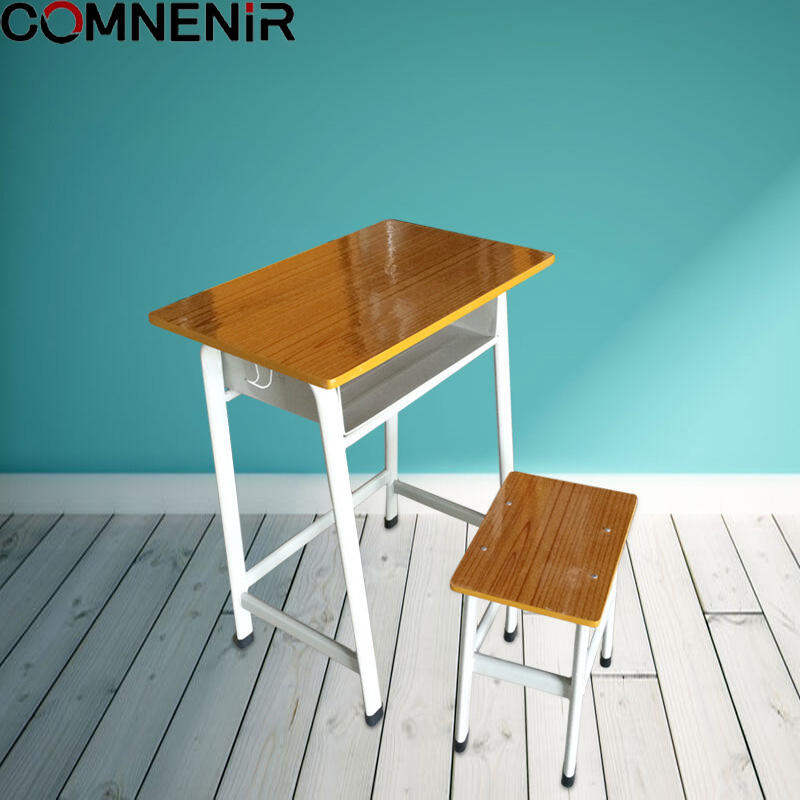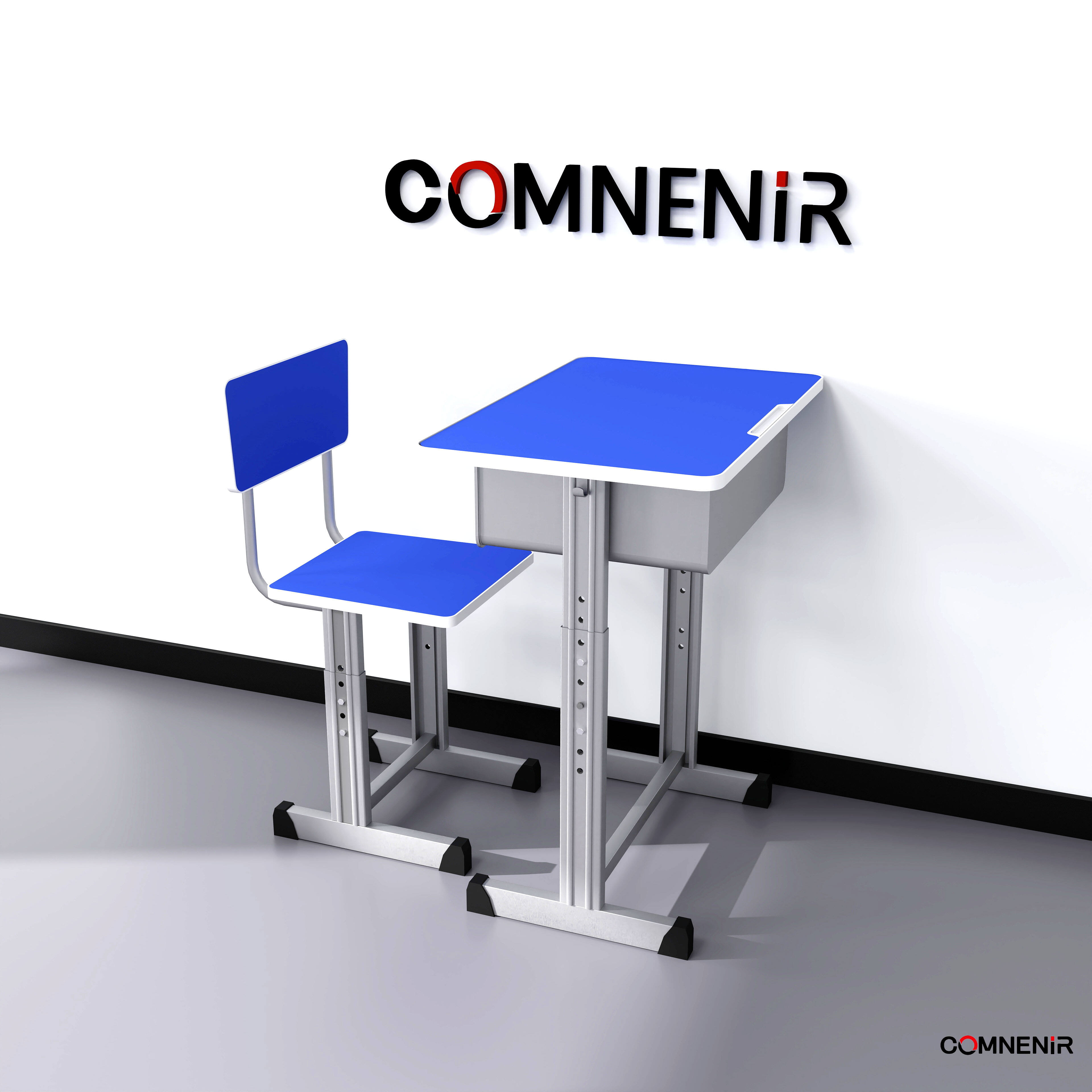Faedah Kesihatan Jangka Panjang Daripada Tempat Duduk Ergonomik
Mencegah Isu Perkembangan Muskuloskeletal
Ergonomik yang baik penting untuk mencegah gangguan rangka tulang rawan, terutama semasa tahun-tahun pertumbuhan kanak-kanak. Dengan mengikuti bentuk alami badan, ia membantu memberikan postur yang betul dan meredakan tegangan otot serta keletihan. Penyelidikan terkini menunjukkan bahawa dengan menggunakan kerusi ergonomik secara rutin, anda boleh mengurangkan tahap ketidakselesaan yang berkaitan dengan masalah rangka tulang rawan sebanyak 30%. Ini tidak hanya akan memastikan kesihatan fizikal optimum dicapai tetapi juga membina platform yang sempurna untuk kesihatan tulang belakang anak anda sepanjang mereka tumbuh. Mempromosikan postur yang baik dari awal boleh membantu perkembangan kesihatan fizikal kanak-kanak, dan akan membantu membangunkan asas untuk kesihatan dan kesejahteraan sepanjang hayat mereka.
Mengurangkan Keletihan Kronik Semasa Pelajaran Panjang
Penyenaraian dalam bilik darjah kerap kali salah, menyebabkan titik-titik tekanan yang mendorong kelelahan kepada pelajar. Kerusi ergonomik telah dirancang dengan niat untuk menyelesaikan masalah ini, dan memupuk postur yang baik sambil mengurangkan tegangan pada kawasan sensitif. Kajian mencadangkan bahawa pelajar merasa hingga 20% lebih fokus dan bersemangat semasa belajar untuk tempoh masa yang panjang di atas perabot ergonomik. Dan untuk menjaga minat pelajar serta dapat mengekalkan maklumat tersebut, anda memerlukan satu persekitaran yang merangsang. Penyenaraian ergonomik memberi persekitaran pembelajaran yang lebih produktif, membawa kepada dinamik bilik darjah yang menyokong kefokusan untuk tempoh masa yang lebih lama dan memupuk tahap tenaga yang lebih baik, semua ini mempengaruhi secara positif pencapaian akademik seorang pelajar.
Impak Kognitif dan Akademik Penyempurnaan Postur
Fokus Yang Ditingkatkan Melalui Penghapusan Ketidakselesaan
Pengurangan aras tidak selesa pelajar yang duduk mungkin bermakna peningkatan prestasi kognitif dan pencapaian peperiksaan serta pembelajaran akademik yang lebih baik. Dan kajian [sic] telah menunjukkan peningkatan 15% dalam tempoh perhatian dalam persekitaran pendidikan apabila juga selesa dengan tempat duduk, sekali lagi membuktikan bahawa keselesaan fizikal boleh membantu membaiki prestasi mental. Postur yang baik membantu memastikan aliran oksigen yang betul ke otak, yang merupakan komponen utama untuk menyelesaikan kerja akademik. Kami letakkan pelajar dalam kedudukan yang selesa - kami cipta tempat yang sesuai untuk pembelajaran di mana pelajar dapat lebih berkesan memusatkan perhatian pada kerja tanpa hiruk-pikuk fizikal.
Keterlibatan yang Ditingkatkan Melalui Sokongan Mobiliti
Kebanyakan kerusi kelas hadir dengan reka bentuk ergonomik yang menyokong fleksibiliti dan membimbing mereka untuk terlibat secara aktif semasa kuliah. Sokongan mobiliti ini membolehkan pelajar merasa lebih selesa bercakap di dalam kelas dan meningkatkan kehadiran sebanyak 25% di beberapa sekolah. Memupuk mobiliti tidak hanya meningkatkan peluang untuk pelajar bekerja bersama lebih kerap, tetapi juga meningkatkan semangat kelas secara keseluruhan, kerana persekitaran menjadi lebih tertumpu pada proses pembelajaran sebagai komuniti. Dengan tempat duduk ergonomik yang sesuai, murid-murid boleh menukar kedudukan dengan mudah dan membantu mencipta persekitaran pembelajaran yang menarik serta aktif sambil mengurangkan keletihan dari duduk dalam tempoh masa yang lama.
Memilih Kerusi Kelas Ergonomik yang Tepat
Kebutuhan Penyesuaian yang Sesuai Umur
Penyesuaian yang Sesuai dengan Usia Kerusi Kelas Ergonomik Penting untuk mempertimbangkan penyesuaian yang sesuai dengan usia ketika memilih kerusi kelas ergonomik. Kerusi harus dirancang untuk menerima julat saiz badan dan umur yang pelbagai, supaya ia boleh sesuai untuk pelajar dari pelbagai demografi. Berdasarkan kajian, kerusi yang boleh disesuaikan dengan ketinggian tempat duduk dan kedudukan sandaran belakang adalah sesuai untuk menyokong lebih daripada 85% pelajar sekolah rendah dan menengah. Kemampuan untuk melakukannya juga mendorong pelajar duduk dengan betul supaya punggung mereka tidak sakit dan mereka boleh menjalani proses pembelajaran yang lebih baik. Akses kepada kerusi yang ergonomik semasa proses pemilihan boleh membantu memilih kerusi yang mencerminkan kepelbagaian fizikal dalam sebuah bilik darjah dan meningkatkan keselesaan serta fokus pelajar.
Pertimbangan Kekal Kuat untuk Bilik Darjah Dinamik
Ketahanan adalah pertimbangan penting bagi kerusi kelas yang ramah lingkungan. Kerusi yang dapat menanggung keteguhan penggunaan aktif dan dengan mudah menyesuaikan diri dengan perubahan cara kelas digunakan merupakan pelaburan penting yang meningkatkan nilai sebuah harta pendidikan. Kerusi yang dibuat daripada bahan berkualiti baik bertahan selama 10 tahun atau lebih, walaupun digunakan secara rutin, dan lebih murah untuk digantikan dalam jangka panjang. Dan pilih bahan yang lestari supaya anda berbuat bahagian terhadap gerakan hijau, sebagai tanggung jawab alam sekitar yang semakin menjadi faktor penting dalam pemilihan perabot kelas kita. Kerusi berat bukan sahaja menyediakan tempat duduk yang selamat dan selesa, tetapi juga menawarkan tempat duduk yang sesuai dalam persekitaran pembelajaran, kerana ia direka untuk digunakan di dalam kelas.
Strategi Pelaksanaan untuk Bilik Darjah yang Sedar Postur
Penyelenggaraan Guru tentang Penyesuaian Kerusi Ergonomik
Untuk membolehkan pelajar mengalami kelebihan ergonomik kerusi ini, guru-guru mesti dilatih tentang pelbagai tetapan kerusi. Dengan memberi pendidikan kepada pengajar tentang cara menggunakan ciri-ciri ergonomik, bilik darjah boleh disesuaikan untuk menampung pelbagai jenis pelajar. Masalah dan penyelesaian berkaitan postur melalui penyesuaian yang betul pada kerusi boleh sangat berkesan apabila dijalankan dalam bentuk bengkel. Ia bukan sahaja menjadi faktor dalam pemahaman tetapi juga membolehkan guru menyelesaikan masalah postur. Selain itu, sesi latihan memastikan guru-kaji sentiasa diperbarui dengan kemajuan terkini dan amalan terbaik dalam ergonomik, memastikan situasi bilik darjah adalah yang terbaik.

Program Kesedaran Postur Pelajar
Penyertaan program-program tentang pendidikan kesedaran postur boleh memberi impak yang signifikan terhadap kesihatan pelajar dan pencapaian akademik jangka panjang. Penyertaan program ini dalam kurikulum sekolah boleh membantu mengajar pelajar kepentingan melaksanakan postur yang baik melalui aktiviti yang menyeronokkan dan interaktif yang boleh menarik mereka untuk lebih berperasaan tentang cara mereka duduk. Laporan dari sekolah-sekolah yang sudah mengamalkan usaha-usaha kesedaran postur ini menunjukkan bahawa pelajar-pelajar merasa lebih terlibat dan selesa dalam kelas mereka. Apabila pelajar mengambil tanggungjawab untuk duduk tegak, tidak hanya mereka boleh merasa lebih baik secara fizikal, tetapi mereka juga boleh meningkatkan kemampuan mereka untuk berkonsentrasi dan membaiki persekitaran pembelajaran secara keseluruhan.
Kepatuhan Terhadap Piawaian Kebolehpasaran Dan Keterlibatan
Keperluan ADA Untuk Pelajar Kebutuhan Khas
Apabila berbicara tentang tempat duduk untuk pelajar dengan keperluan khas, sekolah-sekolah mesti mengenali Akta Kebangsaan tentang Penyandang Disabiliti (ADA). ADA memberikan institusi dengan cadangan untuk mencipta alam sekitar yang mudah capai dan mematuhi undang-undang. Gagal mematuhi dasar tersebut boleh membawa kepada akibat undang-undang yang mendalam dan melemahkan kualiti alam persekolahan. Kerusi yang dirancang secara ergonomik perlu disediakan. Terdapat bukti bahawa membuat kemudahan yang lebih baik dan selamat meningkatkan keyakinan pelajar untuk menyertai aktiviti sekolah sebanyak 40%, hasil terbaik ini adalah untuk mereka yang mempunyai keperluan khas. Oleh itu, dengan mengamalkan panduan ADA, sekolah-sekolah dapat lebih baik menyesuaikan kepada pelbagai keperluan dan menyediakan alam akademik dan sosial yang lebih baik untuk semua pelajar.
Prinsip Reka Bentuk Universiti untuk Jenis Badan Berbeza
Reka bentuk sejagat yang diterapkan dalam bilik darjah menjamin keselesaan untuk semua pelajar, sama ada jenis badan dan mendorong persekitaran pembelajaran yang inklusif. Aspek yang boleh dipadaptasi dan disesuaikan bagi tempat duduk di bilik darjah merupakan sebahagian penting daripada reka bentuk sejagat, kerana ia mengakomodasi julat keupayaan fizikal yang berbeza di kalangan pelajar. Kajian menunjukkan bahawa prinsip ini membawa kepada penyertaan yang lebih aktif dalam bilik darjah, di mana semua murid merasa dihargai dan termasuk. Reka bentuk sejagat mencipta fikiran inklusif untuk pelajar supaya mereka dapat menyertai dengan selamat dalam persekitaran pembelajaran mereka, sama ada saiz, bentuk, atau keupayaan mereka. Tidak hanya ia meningkatkan keselesaan fizikal tetapi juga mencipta budaya keadilan dan maruah di sekolah-sekolah.
Bahagian Soalan Lazim
Apakah manfaat utama kerusi ergonomik?
Kerusi ergonomik memberi banyak faedah kesihatan, termasuklah mengurangkan gangguan muskuloskeletal, menurunkan keletihan, meningkatkan fokus, dan memperbaiki penyertaan di kalangan pelajar.
Bagaimana sekolah boleh memilih kerusi ergonomik yang betul?
Sekolah-sekolah perlu fokus kepada kelincahan yang sesuai umur, keupayaan tahan lama, dan termasuk ciri-ciri ergonomik yang memenuhi keperluan pelbagai pelajar. Bermesyuarat dengan pakar ergonomik boleh membantu membuat pilihan yang lebih baik untuk tempat duduk di bilik darjah.
Mengapa latihan pensyarah penting bagi tempat duduk ergonomik?
Latihan membantu pensyarah memahami cara menyesuaikan kerusi ergonomik untuk memenuhi keperluan pelajar, pada akhirnya membaiki postur dan mencipta alam persekitaran pembelajaran yang lebih sesuai.
Bagaimana program kesedaran postur memberi manfaat kepada pelajar?
Program-program ini meningkatkan keterlibatan dan keselesaan pelajar, mendorong amalan postur yang baik, dan memberi impak positif kepada prestasi akademik mereka.

